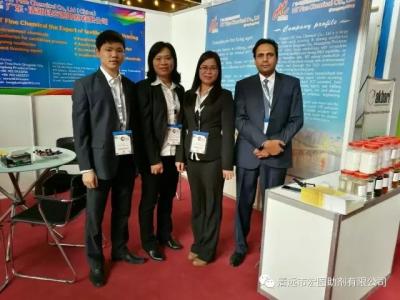In the dyeing of cellulose fibers, reactive dyes currently account for the largest proportion. Reactive dyes contain water-soluble dyes with active groups that can chemically combine with macromolecules such as cotton, wool and silk, so the soaping and rubbing fastness of dyed fabrics is very high. Commonly used leveling agents generally include non-ionic surfactants. In addition to non-ionic surfactants, anionic leveling agents and compounds of non-ionic and anionic surfactants have also been frequently used in recent years.
1. Nonionic surfactant
The hydrophobic groups of commonly used 1F ionic surfactants can be higher alcohols, higher fatty acids, higher alkyl amines, etc. The hydrophobic group is above C12, and long-chain alkyl groups of C16 and C18 are ideal, which can form ether bond, ester bond, amine bond and other forms of connection with the polyoxyethylene hydrophilic group.
Commonly used leveling agents such as Peregal O, leveling agent 102, and leveling agent OP have a certain leveling effect on reactive dyes. This type of leveling agent contains polyoxyalkyl ethers in the long molecular chain, so it can form loose oxygen bonds with the hydroxyl (-OH), amino (-NH) and other groups in the dye molecule.
On the one hand, in the dyeing solution, it will combine with the dye to form a relaxed complex, which will hinder the absorption of the dye, thereby playing a slow-dyeing effect. On the other hand, it can enhance the interface migration and the entire migration of the dye, and further promote the uniform adsorption of the dye. For example, the leveling agent WE for wool, which is aliphatic amine polyoxyethylene ether, is of non-ionic/weak cationic type. It is mainly used as a leveling agent for reactive dyeing of wool, which can increase the amount of color. Moreover, it doesn't affect the percentage of dyeing and has an excellent leveling effect when used in medium, neutral, weak acid, and metal complex dyes.
2. Anionic surfactant
Anionic disperse leveling agents are dye-affinity leveling agents. Anionic surfactants have the same ionic type as reactive dyes, which adopt the mechanism of preempting the dyeing mat to slow down the dyeing speed.
Leveling agent EDER is an anionic leveling agent with a chemical composition of aromatic polysulfonate compound. It is a relatively new type of anionic leveling agent. Its advantages are as follows:
(1) The leveling agent EDER has a certain chelating and dispersing adjustment function for calcium, magnesium, and other heavy metal ions to improve the quality of the dye.
(2) In the dyeing and adsorption stage, it has excellent slow-dyeing performance, and it can control the dye uptake and adsorption evenly.
(3) In the fixation stage, buffer the pH of the dyeing bath to ensure stable and even fixation of the dye and avoid uneven fixation.
(4) It has no adverse effect on the dyeing fastness of the fabric.
3. The compound of non-ionic and anionic surfactants
Non-ionic surfactants obtain a slow dyeing effect through the combination of oxygen atoms on polyoxyethylene bonds and dye molecules through oxygen bonds. At present, most of the nylon leveling agents provided by auxiliary manufacturers are anionic/non-ionic composite leveling agents.



 English
English  日本語
日本語  Español
Español  tiếng việt
tiếng việt  Türkçe
Türkçe  ไทย
ไทย  українська
українська  हिंदी
हिंदी  বাঙালি
বাঙালি  اردو
اردو 

